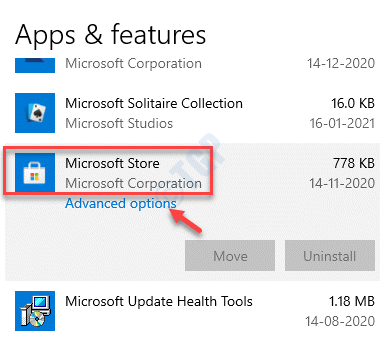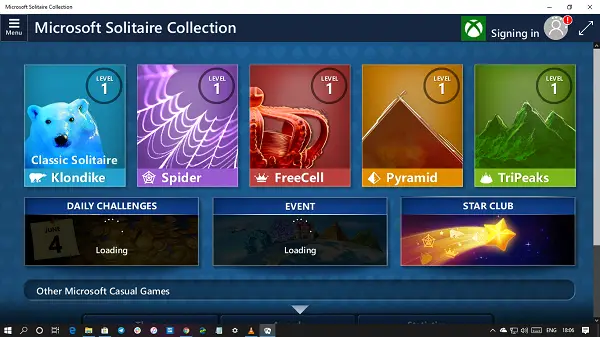

- Reinstall microsoft solitaire collection powershell how to#
- Reinstall microsoft solitaire collection powershell install#
- Reinstall microsoft solitaire collection powershell upgrade#
- Reinstall microsoft solitaire collection powershell windows 10#
- Reinstall microsoft solitaire collection powershell windows#
Enable Audio and Video Redirection for Windows Virtual Desktop 12 comments | 48.63 views per day | by Janusz | posted on March 20, 2020.
Reinstall microsoft solitaire collection powershell how to#
How to disable the “Your organization requires Windows Hello” prompt during OOBE 28 comments | 148.80 views per day | by Janusz | posted on September 17, 2020.
Reinstall microsoft solitaire collection powershell upgrade#
All we have to do is find the new apps that we can remove, add them to the Store for Business, and set it to uninstall in Intune.Īnd this comes with one more benefit – provisioned apps for users that upgrade to 1903 will also be removed! Now we can be sure that new and upgrading devices have a consistent set of apps. So now that Windis around the corner, the process is very simple.

Reinstall microsoft solitaire collection powershell windows 10#
This can also be leveraged with the ESP (or enrollment status page) setting – so that all of the applications will uninstall before the user gets to the desktop.įor Windows 10 Enterprise 1809, we recommend removing the following apps: In our case, it will uninstall all of the in-box apps. As soon as a device is managed by Intune, it begins syncing application deployments. But now we have the option to Uninstallthe app from the users it is deployed to. Just like any other application deployment using Intune, we can select the application and deploy it to a group. After a few minutes we’ll see that Xbox is now listed in the Client apps section. Search for Xbox in the Store for Business and click on the Xbox icon.Ĭlick on Get the app and accept the EULA prompt.īack in the Intune console, click the Sync button on the Store for Business pane. As an example, we’ll add Xbox (which will automatically provision on Windows 10 Enterprise sku’s). Once we have the sync functioning, we’ll need to add apps that we want to remove to our Store for Business catalog. Click Activate.īack in the Intune console, we can now see that the connection to the Store for Business is Active. Towards the bottom there will be an option to active the connection to the MDM. Under the Settings tab, click Distribute. After signing in and accept the EULA prompt, click Manage. Click Enable.Ĭlick the Open the business store link. In the Client Apps section, click Microsoft Store for Business. The first step will be to sync Intune with the Store for Business. To simplify application management for default Windows 10 apps for your organization, we highly recommend leveraging the Microsoft Store for Business and mobile device management.įor the purpose of this explanation, we’ll be using Microsoft Intune. This was also detailed in a great Niehaus article.Īll of this can become very confusing (and tedious). These are called provisioned apps, and as mentioned they will vary by user account type (local, Microsoft account, or AD or Azure AD) and SKU (Home, Pro, Enterprise).
Reinstall microsoft solitaire collection powershell install#
Previously, you were only to able uninstall:įrequently changing apps are one thing, but many of us have also seen different apps automatically install based on the type of user that logs in. To complicate things further, Windintroduces another change: more of the default in-box apps can be removed! These include: Frustratingly, in later versions of Windows 10 (1607, 1703, 1709, and so on) the in-box apps changed – meaning more work for the IT admin maintaining the imaging process. If the computer you are using doesn’t have the default apps that you wish it did because somebody has uninstalled the already, then you can get them back by using the guide below.We’ve all read the famous Niehaus article on how to remove Windows 10 in-box apps using a task sequence. Not all default apps can be uninstalled these ways, but the remainder can be uninstalled by administrators from within the Windows PowerShell.

Some of these Windows 10 default apps can be uninstalled by clicking on the app name and then clicking on the “Uninstall” option from the Settings app, and others can be uninstalled by right-clicking on them from the Start menu and then choosing the “Uninstall” option from that menu instead. Apart from the Start menu, you won’t notice many of them unless you enter the Settings app where it lists you all of the names. You’ll notice many of these default apps available from Windows 10’s Start menu in the All Apps section. All versions of Windows 10 come with universal apps out of the box called default or stock apps.


 0 kommentar(er)
0 kommentar(er)
